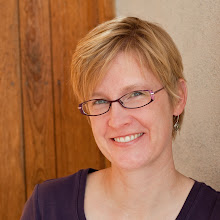Oh Colorado in April. How we do love your sense of humor.
One day I'm dyeing a pink gradation in 70-degree sunshine. The next, I'm cooling my jars in the snow.
I am deep into the dye sampling for a new project. I've spent the last week finalizing the design and talking to the clients about colors... and frankly, reassuring them that I would dye beautiful colors since my computer graphic skills are admittedly poor. The mock-up looked a little like I used spray-paint on the side of a train car perhaps while high on acid. (Don't worry Mom, I just made that up. I've never spray-painted a train car.)
I really love doing the dye sampling. I can test out 8 colors per pot which makes me feel rich at the end of the day. It takes forever to set those pots up, but all those colors are done at once. Unfortunately I can only dye about 30g in a quart jar so the amounts for the full tapestry will have to be done one pot at a time.
And here are the adorable little skeins. This gradation was one I had done before but it has been awhile, so I wanted to make sure I still liked the colors.
For this project I'm going to need to do some sampling to send to the client for final color approval (see spray-painting on acid above), so having small samples was necessary anyway. This one came out great on the first try. No modifications (that never happens).
One of my Instagram followers asked me about dye sample books. I use three different dye sample resources. The first is my own books created as I dye. Every time I do a dye run I write down the formula for each color on a piece of card stock and put a piece of the yarn next to it. Simple, but effective.
I have two other books. One is by Ginny Phillips. I love this book and have used it heavily for a long time. Ginny is no longer selling these books and I doubt you'd be able to find one anywhere. I now keep mine in a locked fire safe, so don't think you're going to find it!
The other resource which you can access is by Deb Menz and Sara Lamb. They produce a set of dye sample books which you can find on Deb's website. They are called Color by Number. Yes, they seem expensive at first glance, but think about the time it takes to dye hundreds and hundreds of colors and then loop each piece of yarn through holes on card stock printed with the formulas. Just doing the initial research for these books makes it incredible that they even exist. This is a priceless resource if you are a dyer. The only other way to get this information is to dye all these colors yourself.
Oh, and in case you were still worried about my tax day fun, it turned out okay. Well, the bottom line wasn't fun, but the taxes did get done and submitted on time. Whew.










Have you told us how you dye in jars? :D
ReplyDeleteNot yet! Just wait!!!! :-)
DeleteOh goodie!!!!
DeleteAre you using synthetic dyes, or natural dyes? Do you grow your own dyes as I have heard that people do...or actually where do you get them? Thanks for the information. Janie
ReplyDeleteThese are synthetic. Acid wool dyes, sabraset from Prochemical and dye. I don't have a dye garden, but some day I will grow indigo or woad if I life in the right place and have room for a garden. You can buy all the natural dyes though. Look at Earthguild to start.
DeleteIf spray painting a train car is a life goal, Your cousin Molly can help.
ReplyDeleteWhoo-ha-ha-ha-ha!!!!! Sounds like something to be done in Detroit and I bet you have students with experience. I think I might have to pass. I'll have to send you the image I made in Photoshop of that cartoon and you'll see what I mean! It looks like some of the best graffiti art out there (the colors, not the cartoon--the graffiti artists are better).
Delete